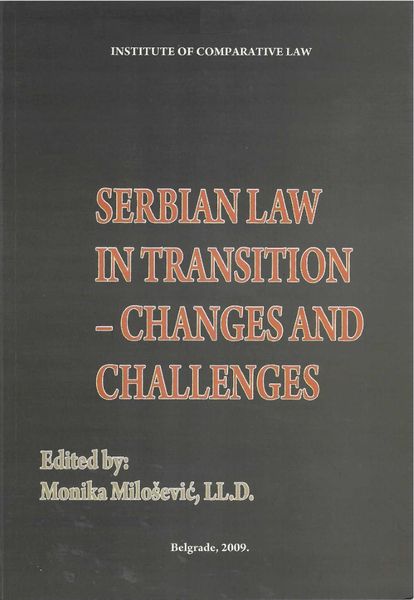European Level of Serbian Medieval Legislation
European Level of Serbian Medieval Legislation
The 1349 (1354) Tsar Stephan Dushan’s Code
Author(s): Đurica Krstić
Subject(s): History of Law, Political history, 13th to 14th Centuries
Published by: Institut za uporedno pravo
Keywords: medieval Serbian law; high level of legal development; unification; rights and duties of population strata; Byzantine law; sources of law
Summary/Abstract: A legislative Act and the most significant legal monument of Serbian medieval history – Code of Tsar Stephan Dushan was enacted in 1349 and amended in 1954. Its original has never been found, but some twenty five transcriptions in different editions were by now known to our history of law. The oldest ones are the Struga and Prizren copies. For decades this monument has been and still is the subject of research both in the country and abroad. Emperor Stephan Dushan was probably the most powerful rulers in Europe of his time, with real prospects of taking Constantinople and inheriting thus the declining Byzantine Empire. This position involved also his imperial duty to introduce peace and order in ethnically and religiously different countries under his rule. This had to be achieved by legal unification on the grand model of Byzantine law which has in this way definitely introduced in the foundations of Serbian medieval law.
The Code is a complementary act completing and refining the existing system, providing a unified basis for regulation. Its content is a genuine indication of high level of legal and general culture of Serbian medieval State, reflecting also economic conditions and developed relations of Dushan’s Empire in all aspects of life. In a way it is a written proof of the rise of State which, unfortunately, did not continue due to sudden death of Stephan Dushan in 1355.
Included in the Code are the following matters: position of Church as a crucial factor of State order with provisions of constitutional character, rights and obligations of feudal aristocracy and dependent layers of population, State order and economy, inheritance and particularly, system of penalties, procedure and administration of justice emphasizing the rule of law in most modern sense of the word, civil law matters, etc.
Book: Serbian Law in Transition – Changes and Challenges
- Page Range: 357-365
- Page Count: 9
- Publication Year: 2009
- Language: English
- Content File-PDF

